Last Updated on: 9th March 2024, 12:37 am
Hey, everyone! Basketball is more than just a game; it’s packed with strategy, especially on the court. The design of the court plays a huge role in elevating the game.
NBA Basketball Court Dimensions And Markings
In the NBA, players compete on a huge 94 by 50 feet court. This size gives players ample space to showcase their skills. The three-point line stretches 23.75 feet from the hoop, except in the corners, where it’s 22 feet. The key, a vital area for scoring, is 16 feet wide.
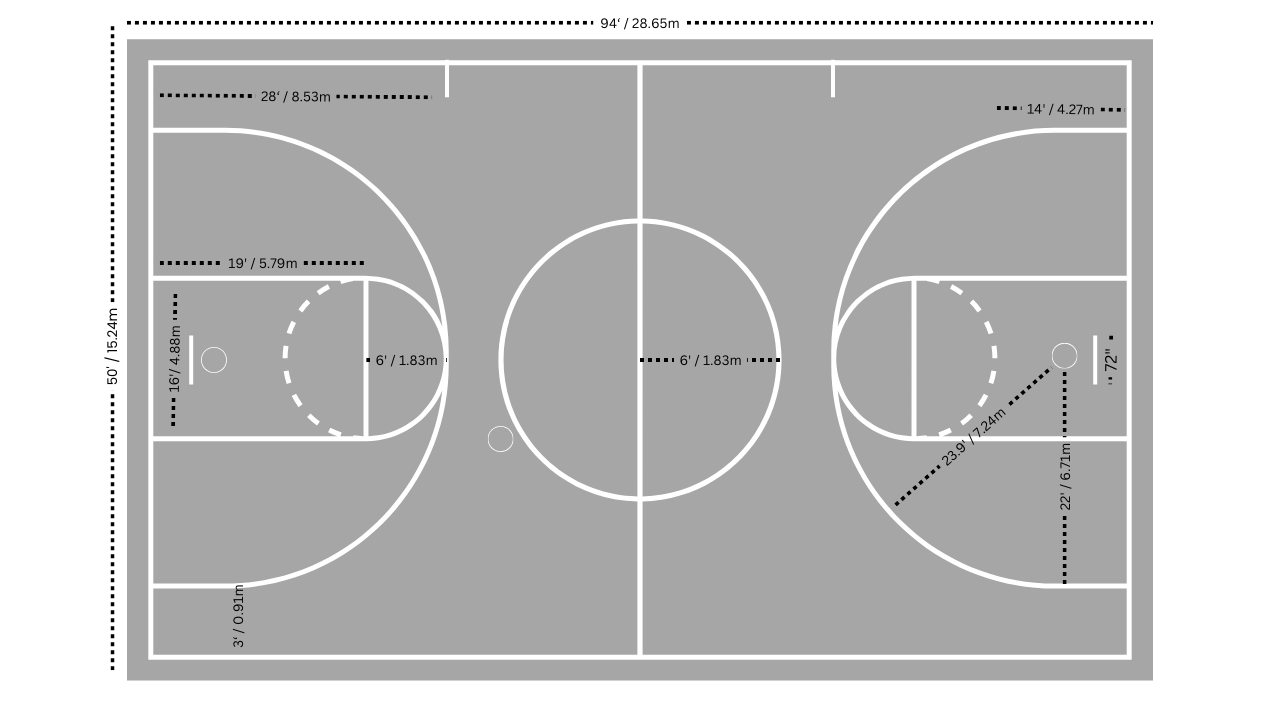
- Court size: 94 feet long by 50 feet wide.
- Three-point line: 23.75 feet from the basket at the top of the arc and 22 feet from the corners.
- Free-throw line: 15 feet from the backboard.
- Key (paint area): 16 feet wide.
WNBA Basketball Court Dimensions and Markings
The WNBA courts match the NBA in dimensions but have a slightly closer three-point line. It’s 22.15 feet from the top and 21.65 feet from the corners. These distances challenge players to excel in long-range shooting.
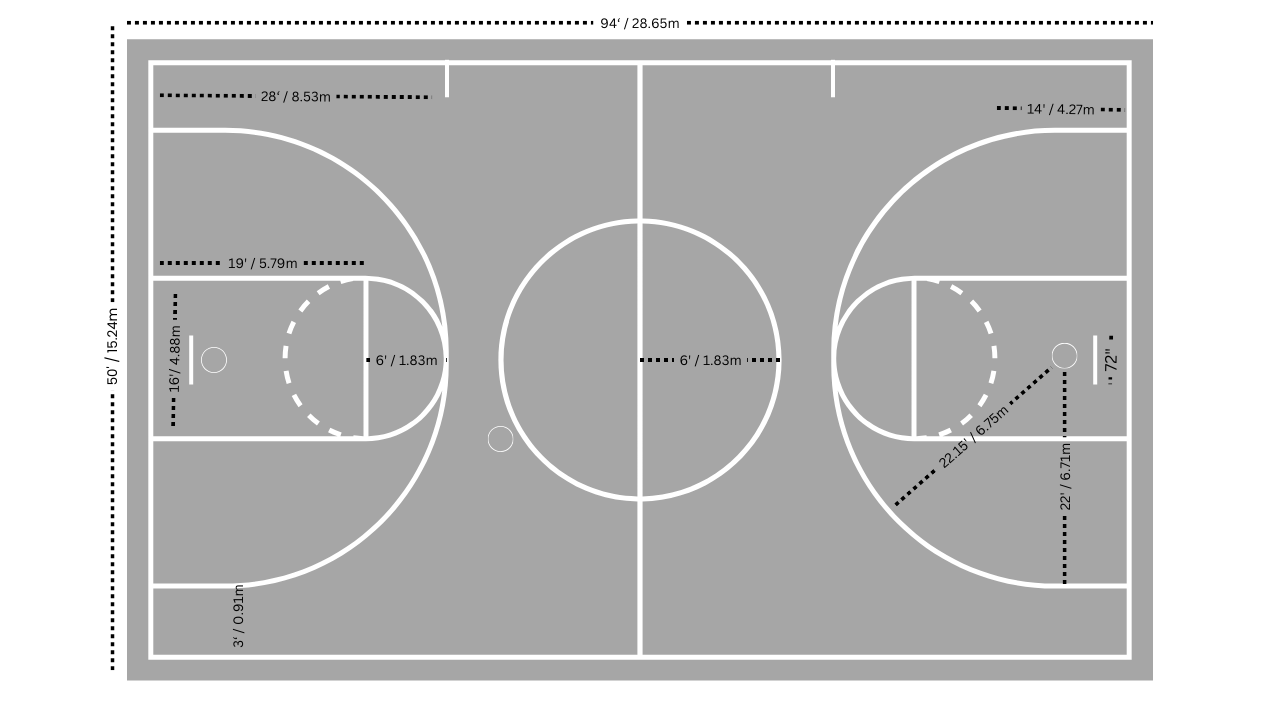
- Court size is the same as the NBA: 94 feet by 50 feet.
- Three-point line: 22.15 feet from the basket at the top of the arc and 21.65 feet from the corners.
- Free-throw line: 15 feet from the backboard.
- Key (paint area): 16 feet wide.
High School Court Dimensions and Markings (United States)
High school courts bring the action closer together. They are 84 feet by 50 feet, with a three-point line at 19.75 feet. The key is narrower, at 12 feet wide, pushing players to be more aggressive in scoring.
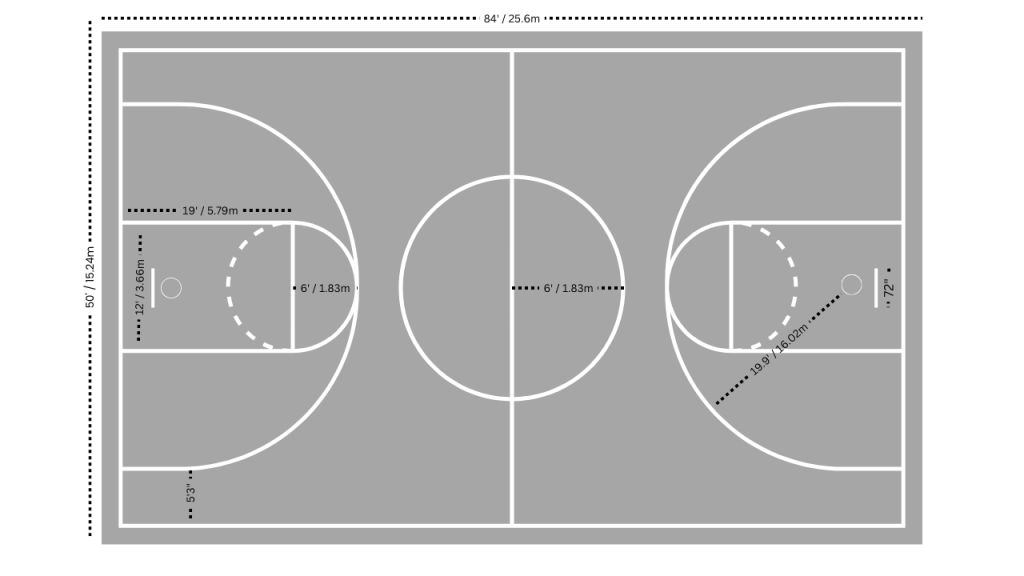
- Court size: 84 feet long by 50 feet wide.
- Three-point line: 19.75 feet from the basket.
- Free-throw line: 15 feet from the backboard.
- Key (paint area): 12 feet wide.
NCAA Basketball Court Dimensions and Markings
The NCAA court is as big as the NBA’s but has a closer three-point line, at 22.15 feet, and a 12-foot-wide key.
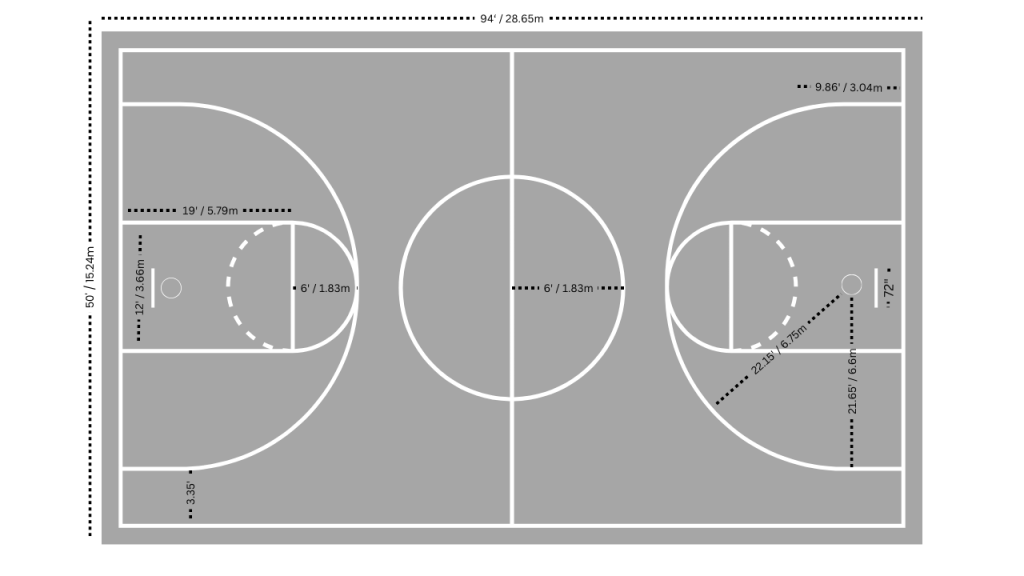
- Court size: 94 feet long by 50 feet wide (same as NBA).
- Three-point line: 22.15 feet from the basket.
- Free-throw line: 15 feet from the backboard.
- Key (paint area): 12 feet wide.
FIBA Basketball Court Dimensions and Markings
FIBA courts are slightly smaller and follow similar dimensions for the three-point line and key.
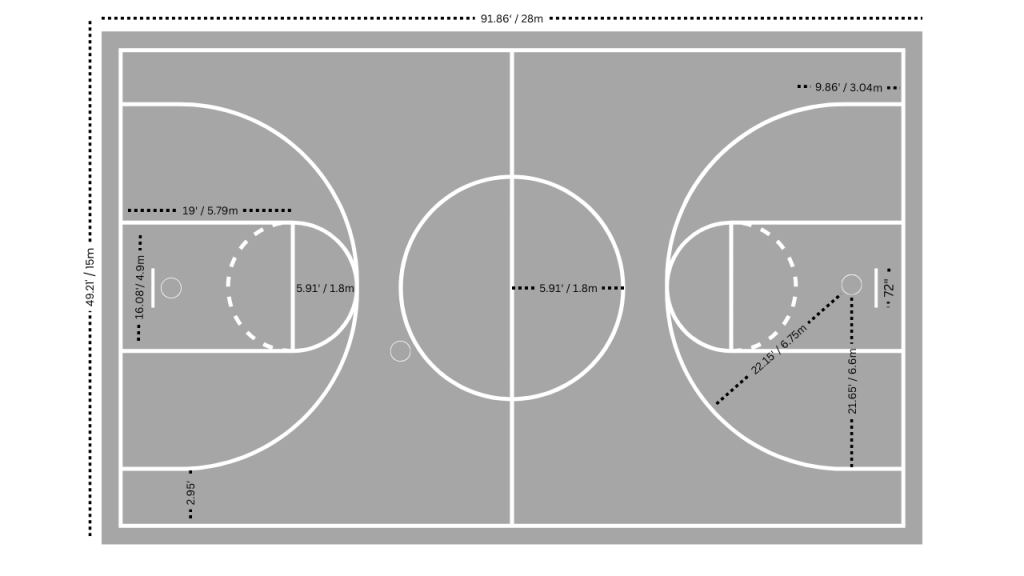
- Court size: 28 meters long by 15 meters wide (approximately 91.86 feet by 49.21 feet).
- Three-point line: 6.75 meters from the basket (about 22.15 feet).
- Free-throw line: 4.6 meters from the backboard (about 15.09 feet).
- Key (paint area): 4.9 meters wide (about 16.08 feet).
Different Parts And Markings Of A Basketball Court
- Baseline: The boundary at each end of the court, vital for executing inbound plays to resume play after a stoppage.
- Sideline: Defines the lateral boundaries of the court, helping to regulate in-bounds play and prevent violations.
- Half-court line: Divides the court into two equal sections, serving as a critical point for establishing team control and initiating offensive strategies.
- Free throw line: Positioned 15 feet from the backboard, it’s a critical spot for awarded shots, testing player accuracy under various game conditions.
- Frontcourt/Backcourt: Designated areas relative to each team’s basket where offensive and defensive strategies are executed; the frontcourt is the half toward the opponent’s basket, and the backcourt is the half including and behind a team’s basket.
- Driving and rebounding lanes: Key zones for penetrating defenses to score (driving lanes) and for positioning to recover missed shots (rebounding lanes).
- Elbows and free throw line extended: Strategic points on the court where the free throw line meets the lane lines (elbows) and an imaginary line extending from the free throw line perpendicular to the sidelines, crucial for setting up plays and creating scoring opportunities.
